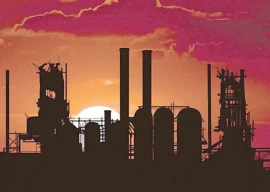
The tale of construction, in one way or the other, begins with the beginning of human beings. Development of infrastructure such as roads, water supply, power supply, sanitation etc have always been considered vital for leading a decent standard of life.
It is a proven fact that from a simple provision of shelter to most sophisticated industries to the economic well-being of a nation, construction plays a central role. Construction activities invariably require the combination of inputs of materials, equipment, labour and human intellect. The presence of modern-day infrastructure and ancient wonders of the world related to physical facilities and structures both stem from construction. It is another reality that development of a country or a region is directly proportionate to the pace of construction activities. The construction industry involves at least twenty-nine manufacturing and service-oriented entities and extends its manifold benefits from high-tech organisations to unskilled labour.
The construction industry has strong backward and forward linkages. Increasing construction activity in the economy can have snowball effects in allied industries such as, cement, iron, steel, timber and wood, marbles, tiles and stones, electrical and sanitary works, glass, paints and varnishes, electrical lightning, power and gas, horticulture, interior decoration, transport, light-heavy construction machinery, plastics, fibers, furniture, electrical appliances, and many more. Most importantly millions of jobs can be generated during the chain reaction process.
Hussain is an Islamabad based freelance analyst
The country needs massive investment in physical infrastructure to meet the needs of a growing population. The key drivers for the industry are government spending on physical infrastructure and real estate demand in both residential and industrial sectors. For instance projects like roads, public schools, parks, hospitals, colleges, libraries, universities, dams, bridges, water supply, sewerage and drainage, ports, railways, airports, townships, lining of canals, etc, are helpful projects in producing the multiplier effects in the economy, reducing unemployment, alleviating poverty, improving socio-economic indicators and infrastructure of the country. The government therefore should aim to increase industry’s contribution from current 2.3 per cent to 6 percent of GDP in the near future
According to a World Bank study (2008a), a unit increase in expenditure in construction sector has a multiplier effect and the capacity to generate income as great as five times the cost of the unit. If the economy grows at the rate of 10 per cent, the housing sector has the capacity to grow at 14 per cent and generate 3.2 million new jobs over a decade.
Cement dispatches, a strong indicator of the industry, were 18.5 million tons in FY 06, which peaked at 31.1 million tons in FY10, however, it is expected to decline during the outgoing fiscal year. The per-head cement consumption is 131kg against international average of 270kg. The growth in cement dispatches averaged around 14 per cent during FY06-FY10.
For the construction industry to prosper, there are measures that need to be taken. The government has to ensure increased allocation to the PSDP and along with that has to develop some kind of a mechanism to limit fluctuation in the prices of building materials. One major hindrance is the lack of readily available financial capital for builders. Whatever capital is available, isi usually only obtainable at high cost.
The lack of a properly developed rental lease market has also suffocated the construction industry. It has been said that Pakistan is a source of cheap labour, but the efficiency level of this labour force needs to be increased. At the same time the availability of skilled and semi-skilled labour falls short of requirements.
So far the local construction industry has not witnessed a satisfactory uptake of technology.
The lack of an adequate dispute resolution and the presence of a grindingly slow bureaucracy in bidding ad tendering have also served to retard the growth of this essential industry.
Investment in Pakistan in this sector was a little over Rs25b (SBP Report 2009/10) as against Rs27b in 2009. Foreign investment contributed almost 30 per cent during FY05-FY09 (SBP Report 2009/10). Private Sector Gross Capital Formation in the construction industry was around Rs14b in FY06 which peaked at almost Rs17b FY 07 and slipped to Rs12b in FY10. The Public Sector Gross Capital Formation was around Rs5b in FY06 it peaked at Rs9.82b FY 07 and slipped to Rs7.1b in FY10 (ESP 2010/11).
On the demand side of the industry, government spending as a percent of GDP on roads highways and bridges has remained below 1 percent and FY10 saw the lowest spending 0.4 per cent of GDP under this head.
Spending on water supply and sanitation has been languishing around 0.2 per cent of GDP and on rural development 0.18 per cent (average) since FY 2006. Spending on low-cost-housing has remained less than Rs1b during FY06-FY10. In total, spending on public sector development projects (PSDP) is hovering below 3% of GDP for some time now and unfortunately utilisation of funds is less than 50 percent in most cases (ESP 2010/11).
Published in The Express Tribune, July 11th, 2011.
COMMENTS (2)
Comments are moderated and generally will be posted if they are on-topic and not abusive.
For more information, please see our Comments FAQ



































1714129906-0/Clint-Eastwood-(1)1714129906-0-270x192.webp)






At Khan, that's a pragmatist, not a cynical.
As awful as this is to say, a cynic might look at the situation and say well terrorists blowing up buildings requires our building industry to (a) build more buildings and (b) build better buildings that can withstand such mad men.